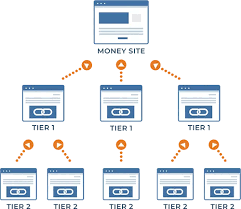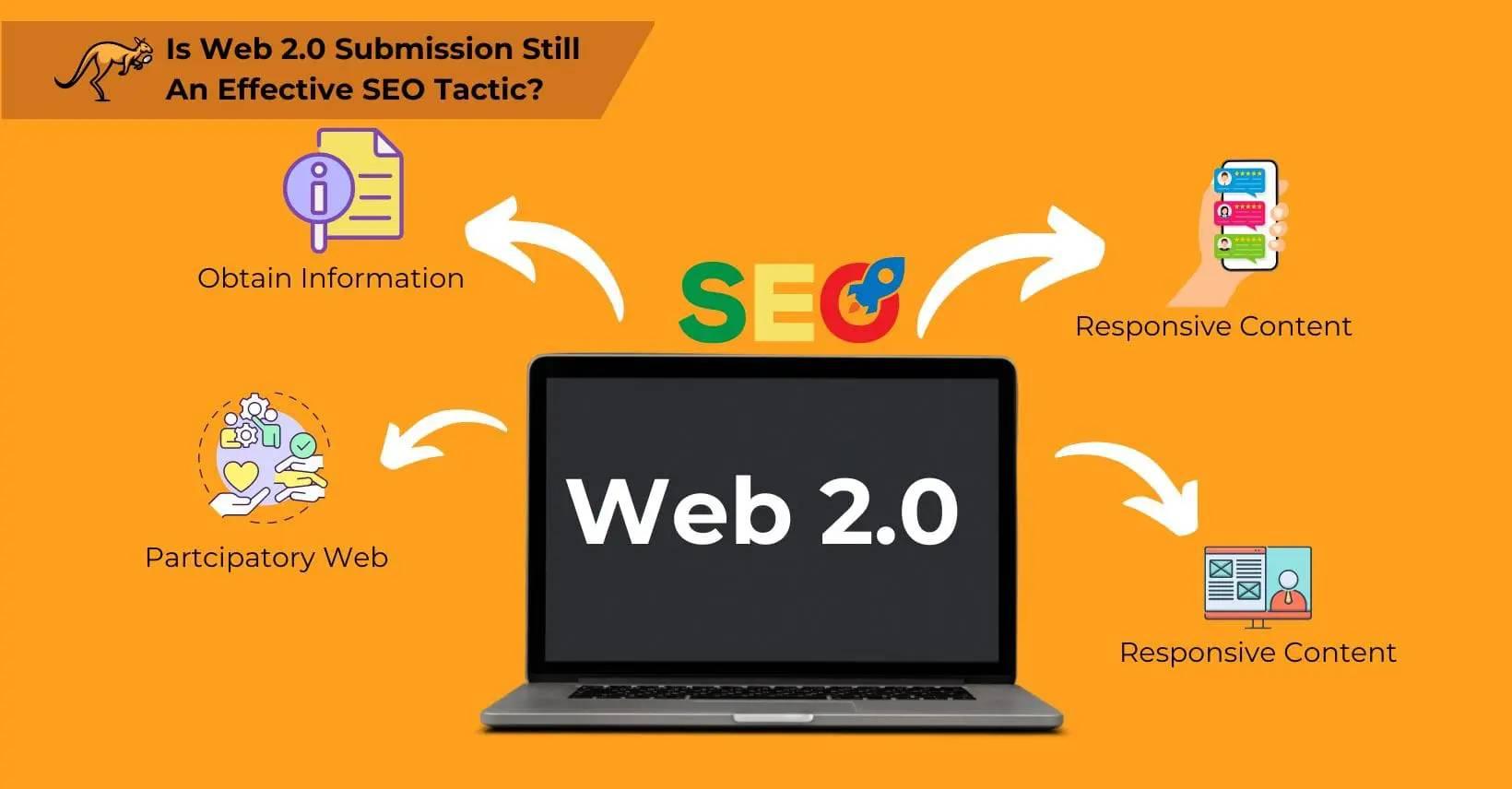In the ever-competitive world of search engine optimization (SEO), building quality backlinks is one of the most effective strategies for improving your website’s visibility and domain authority. One of the most underutilized methods in backlink building is the use of Web 2.0 sites for backlinks. Web 2.0 platforms offer an excellent opportunity to create high-quality, contextually relevant backlinks while controlling the content you post. In this article, we will explore how to use Web 2.0 sites for backlinks, and how you can harness the power of these platforms to enhance your SEO strategy.
What Are Web 2.0 Sites?
Web 2.0 refers to platforms that enable user-generated content. Unlike traditional websites that are static and lack interaction, Web 2.0 sites allow users to create and publish content freely. These platforms, such as WordPress, Blogger, and Tumblr, provide opportunities for individuals and businesses to post blogs, articles, and other media that can be linked to their main websites.
One of the key advantages of Web 2.0 platforms is that they allow users to create backlinks to their own domains, which helps to improve the site's SEO by boosting its backlink profile. These backlinks, when done correctly, can improve your site’s authority, relevance, and visibility on search engines like Google.

Why Use Web 2.0 Sites for Backlinks?
When considering how to use Web 2.0 sites for backlinks, it’s essential to understand why they are so valuable in the SEO world. Here are some reasons to consider:
1. Improved SEO Performance
Web 2.0 sites allow you to publish content with backlinks that point to your website, directly impacting your website’s rankings. Backlinks from high-authority platforms are trusted by search engines and can significantly improve your site's visibility in SERPs (Search Engine Results Pages).
2. Easy to Set Up and Use
Setting up a profile on most Web 2.0 platforms is straightforward. Unlike other link-building methods that may require technical knowledge or expensive tools, Web 2.0 platforms are free, user-friendly, and accessible for both beginners and experienced SEO professionals.
3. Full Control Over Content
Unlike guest posting or paid backlinks, Web 2.0 sites for backlinks give you full control over the content. You can decide what to write, how to structure your posts, and how to integrate your backlinks without restrictions from third parties.
4. Diversified Backlink Profile
Having backlinks from a variety of sources helps create a natural backlink profile, which is important for avoiding penalties from search engines. By integrating Web 2.0 sites into your strategy, you can diversify your link-building approach while still obtaining valuable links.

How To Use Web 2.0 Sites For Backlinks: A Step-by-Step Guide
To fully leverage Web 2.0 sites for backlinks, you need to follow a clear, structured process. Here’s how you can start building backlinks using Web 2.0 platforms:
Step 1: Choose the Right Web 2.0 Platforms
Not all Web 2.0 sites are created equal. While there are dozens of platforms to choose from, focusing on high-authority, reliable sites is crucial for SEO success. Some of the best Web 2.0 platforms include:
- WordPress: Known for its versatility and SEO features.
- Blogger: A popular platform with high domain authority.
- Medium: A well-known blog platform with a large user base.
- Tumblr: A content-sharing platform ideal for creative content.
Make sure to choose platforms that align with your niche and have a strong online presence.
Step 2: Create a High-Quality Profile
When you start using a Web 2.0 platform, the first step is to set up your profile. This will be the foundation of your content strategy. Fill out your bio with relevant details and include a link to your website. Make sure to add your branding, including logos or images, for a professional look. A high-quality profile helps establish credibility and trust with your audience and search engines.
Step 3: Write High-Quality Content
Content quality is key when leveraging Web 2.0 sites for backlinks. Write articles, blog posts, or other forms of content that are relevant to your niche. Be sure to include valuable information, original insights, and engaging media to keep your audience interested.
Your content should:
- Provide value: Focus on solving problems or answering questions that your audience might have.
- Be well-structured: Use headings, subheadings, bullet points, and other formatting options for easy reading.
- Include your target keywords naturally: Incorporate your keywords, such as how to use Web 2.0 sites for backlinks, throughout your content, but avoid keyword stuffing.
Step 4: Place Backlinks Naturally
The most crucial step in using Web 2.0 sites for backlinks is integrating links to your website. Place these backlinks naturally within the content, ensuring they are relevant to the context. You can insert links in the following places:
- Within the body of the content: Include links within sentences that make sense contextually.
- In the author bio: Include a backlink to your site in your profile or author bio.
- Call to Action (CTA): Use a CTA in your posts to direct readers to your website.
Be cautious not to overdo it with backlinks, as excessive links can appear spammy and may result in penalties from search engines.
Step 5: Update and Optimize Your Content Regularly
Search engines favor fresh, updated content. It’s important to regularly post new articles or update old ones to keep your Web 2.0 sites active and relevant. This will help maintain the value of your backlinks and ensure they continue to drive traffic to your website.
Best Practices for Using Web 2.0 Sites for Backlinks
- Focus on Quality Over Quantity: Rather than creating numerous low-quality posts, focus on crafting a few high-quality, well-researched articles.
- Be Consistent: Regularly post content on Web 2.0 platforms to maintain an active profile.
- Engage with the Community: Many Web 2.0 platforms have active communities. Participate in discussions, comment on posts, and build relationships to improve your site’s authority.
- Monitor Your Backlinks: Use SEO tools like Google Search Console to track the performance of your Web 2.0 backlinks and make adjustments if necessary.
Common Mistakes to Avoid When Using Web 2.0 Sites for Backlinks
When building backlinks using Web 2.0 sites for backlinks, avoid the following common mistakes:
- Spammy Content: Avoid posting low-quality content with excessive links, as this can harm your website's SEO.
- Not Updating Your Content: Once your profile is set up, don’t neglect it. Search engines favor fresh content, so keep your Web 2.0 pages updated.
- Over-Optimizing: While keywords are important, avoid keyword stuffing, as this can negatively impact the quality of your content and harm your SEO efforts.
Conclusion
Using Web 2.0 sites for backlinks is a highly effective, cost-efficient strategy for boosting your website’s SEO performance. By creating quality content, strategically placing backlinks, and maintaining an active profile on high-authority platforms, you can significantly enhance your site’s search engine rankings and online visibility.
Follow the steps outlined in this guide, and ensure you consistently update and optimize your Web 2.0 profiles to reap the long-term benefits of this powerful SEO technique. By effectively leveraging Web 2.0 platforms, you can create a diverse and natural backlink profile that drives organic traffic and improves your website's domain authority.




